Teacher: Catalyst of Creativity, Generator of Innovation
Teachers hold a special place in our hearts. They are the ones who make learning a wonderful experience. It is not often that we thank these wonderful people who have helped to shape and build us into the person we are today. The 2014 National Teacher’s Day was celebrated on 16th May. As part of the celebration, the Ministry of Education (MOE) put up a three-day exhibition at the Putra World Trade Center (PWTC), Kuala Lumpur, to display how, in classes across the country, teachers bring knowledge to the generations of students each day.
The exhibition was opened by Deputy Minister of Education, P. Kamalanathan. He thanked the teachers for their contributions and acknowledged the role that the teaching profession plays in the transformation of students, community and country. The exhibition, themed 'Teachers: Catalyst of Creativity, Generator of Innovation', reflected the role of educators in the national transformation initiatives.

In line with the bold Malaysia Education Blueprint 2013-2025 launched back in September 2012, the plan aimed to revamp and push the education system to produce innovative students, capable of high-level thinking, who are able to meet the future needs. The Prime Minister has mentioned that, “In the new economy, the thirst is for knowledge, innovation and technology. Our system must meet these needs. We must prepare our children for opportunities that have yet to exist.”
The blueprint outlined 11 changes required to transform the national education system to be comparable to that of developed nations. It is set to be carried out in three phases. The first wave called for increased support for teachers and enhancement to core student skills. The second wave called for building upon the progress and scale across the country. The third and final wave envisaged schools having autonomy to handle their own administration.
One significant change required to attain the outcome of thinking and innovative students is the shift to impart High Order Thinking Skills (HOTS). It is imperative to equip the students with these core HOT skills. HOTS refer to the ability to analyze situations critically, evaluate the possibilities structurally and create the appropriate solutions systematically. It is beyond the ability to remember, understand and apply which are known as Low Order Thinking Skills (LOTS).
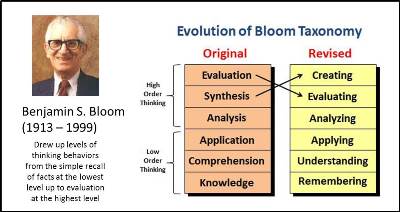
The HOTS and LOTS concept was devised by Benjamin Bloom who chaired an educator committee around 1956 in an effort to classify Educational Goals. It is referred to as Bloom Taxonomy with the aim to motivate educators to create a holistic learning approach.
MOE Bahagian Pembangunan Korikulum (BPK), or Curriculum Development Section, teamed up with Malaysia TRIZ Innovation Association (MyTRIZ) and Education for a New Era (ENE) to showcase the HOTS-TRIZ-Open Problems at the Teacher’s Day exhibition. A special “Jeopardy-like” Quiz was developed to demonstrate the High Order Thinking Skills leveraging on the TRIZ-Open Problems methodology via an interactive learning platform.
MyTRIZ is a non-profit organization that exists for the benefits of those who know the TRIZ methodology and wish to apply TRIZ for the benefit of all mankind. ENE is a not-for-profit international laboratory with a goal to develop educational system for teaching Open Problems solving skills and creativity.
TRIZ, known as Theory of Inventive Problem Solving, is a methodology and a set of tools derived from the study of patterns of invention. It is a structured problem solving and systematic innovation methodology that can be used across industries and sciences.
Open Problems are problems that have no-standard answers; as opposed to Closed Problems which are similar to our typical school textbook questions where there is only one answer and the answer is in the textbook. The Open Problems comprise of problems from real-life situations. In the process of solving these problems, the students will learn techniques that prepare them for creative and inventive work.
The “Jeopardy-like” Quiz featured a competition in which the visitors were presented with questions based on the Bloom Taxonomy. The visitors were given answer sheets to document their solutions to 13 problems, while attempting to score a total of 4,200 points and above. The top scorers were presented with the 150 Open Problems or Smart Tales books.


Several participants were hooked on the Quiz and made significant attempts to win the two highly interesting books. Some visitors showed reservation in taking the quiz, but a large majority was curious and spent their time observing others. A number of participants returned several times to try and obtain higher marks to win the gifts.
Many visitors found the interactive approach interesting, noting that the use of touch screen TV enhanced the experience and the total concept certainly provided them with a better understanding of the High Order Thinking Skills approach. MOE and MyTRIZ were pleased to receive the acknowledgement from educators that the HOTS – TRIZ-Open Problems approach is a good way to enhance the core thinking skills of students.
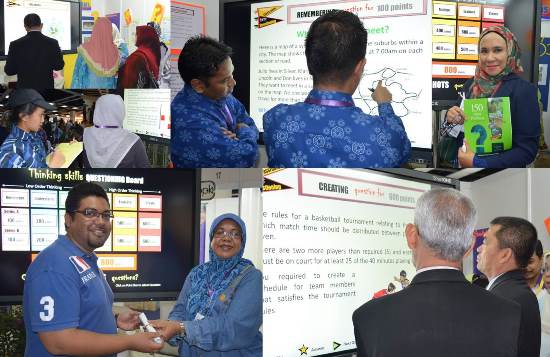
While the exhibition was successful in providing a first-hand experience of the HOTS concept, preparing the teaching expertise remain a daunting task. As proven by several past projects, good curriculum and pedagogy seems to get watered down in the process of being scaled up.
Similar frustration is expected when the Thinking Skills efforts is expanded. The inertia in the system will naturally lean towards imparting knowledge on the process of thinking instead of the value of thinking. The worst to be expected is where the resistance to change will skew the learning towards LOTS which requires students to memorize the algorithm of thinking.
Existing school structure is also expected to limit what and how Thinking Skills can be taught. The formal sessions, where single subjects are taught, will need to make way for informal sessions, where group work is highly encouraged and application of multi-disciplinary subjects is the basis in generating possible answers. The assessment mechanism too needs to be enhanced with higher tolerance for failure and risk taking.
A recent release of the Program for International Student Assessment (PISA) Creative Problem Solving Assessment 2012 results showed Malaysia being ranked 39 out of 44 countries on the ability of 15-year olds to resolve everyday problems. The mean score of 422 was below the global mean of 500 and certainly way below the top performing country at 562.
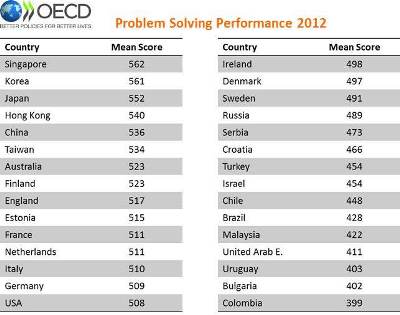
The assessment used simulated real-life problems such as using an unfamiliar vending machine, or operating a malfunctioning electronic device. It was structured with 6 different levels of complexity to measure the students’ reasoning skills, their ability to regulate problem solving processes and their willingness to use intuition to initiate the solutions.
In fact, a sample of the PISA questions was included in the quiz competition during the exhibition. Most visitors who attempted the questions found that they were not difficult. Several participants felt that the difficulty may be due to the students’ inability to extract the problem conditions and manage the ambiguity. Once the condition and assumption were developed, the application of problem solving process was straight forward.
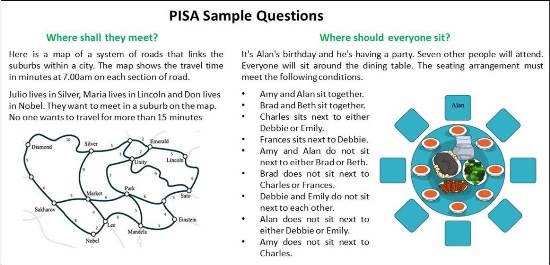
The feedback from the exhibition participants correlated with the PISA assessment score. Malaysia students scored poorly at 29.1 on questions measuring the acquisition of knowledge and 29.3 on questions measuring the utilization of knowledge. The lack of such ability is alarming as the top countries had a score of 62 and 55.4 on these abilities. With such findings, the country must accelerate the introduction of HOTS to address these weaknesses and prepare the students for a competitive future.
The biggest challenge is the preparation of teachers to teach the High Order Thinking Skills. The teachers need to learn and master the techniques. Teachers need to be open-minded, use open problems, encourage dialogues, must not oppress the students with authority and not be afraid to show their lack of knowledge. They must not stop their own development but aim to grasp the nature of true expertise.
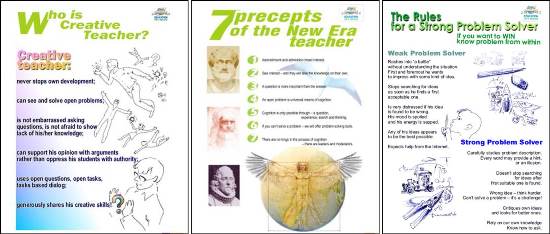
MyTRIZ and ENE are ready to assist where possible. More than two hundred TRIZ-Open Problems trainers have been prepared to impart the expertise to the teachers. The contents are being adapted to our local scope and context. With the resources in place, the trainer pool is awaiting the call to help but there is a generation of work ahead.
You can teach what you know, you can give what you have and you can assist without being asked … the MyTRIZ community needs to act now and not wait for the calls. It is the best way we can give back to the teachers and help improve the education system.












